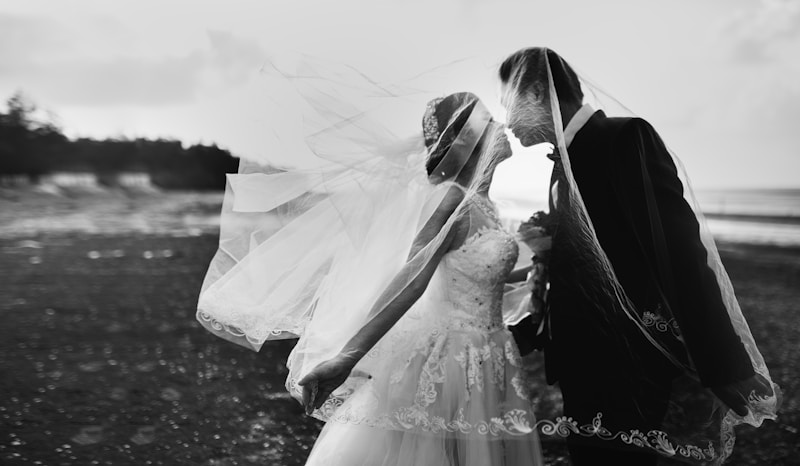Choosing the Right Material for Your Wedding Dress: A Comprehensive Guide
Your wedding day is one of the most memorable moments in your life, and choosing the right wedding dress is crucial to making it unforgettable. One of the most vital aspects of selecting a wedding dress is determining the right material. In this guide, we will explore various fabrics used in Wedding dresses, helping you make an informed decision that reflects your personality and style.
Understanding Wedding Dress Materials
Wedding dresses come in various materials, each offering unique advantages and aesthetics. Understanding these materials will help you select the one that best suits your body type, wedding theme, and personal taste. Here are some popular materials used in Wedding dresses:
| Material | Characteristics | Best For |
| Silk | Luxurious, smooth, and timeless | Formal weddings, elegant designs |
| Chiffon | Lightweight, flowing, and soft | Outdoor weddings, bohemian styles |
| Lace | Intricate patterns, romantic feel | Vintage-inspired designs, classic themes |
| Satin | Glossy finish, drapes well | Structured dresses, Modern weddings |
| Tulle | Delicate and airy, often layered | Ballerina skirts, playful designs |
1. Silk: The Epitome of Luxury
Silk is a Classic Wedding dress material known for its luxurious appearance and feel. It drapes beautifully, which enhances the silhouette of the dress. With a variety of finishes, such as silk satin, silk chiffon, and silk organza, silk can be used for both structured and flowing designs. However, silk is more expensive and requires careful handling and cleaning.
2. Chiffon: Perfect for a Romantic Aesthetic
Chiffon is a lightweight, sheer fabric that creates a soft and romantic look. It is perfect for outdoor or destination weddings due to its breathability. Chiffon can be layered to create depth and movement, making it ideal for flowing A-line or empire waist dresses. Its gentle draping can flatter a variety of body shapes.
3. Lace: Timeless Elegance
Lace is synonymous with romance and tradition. This intricate fabric adds texture and a vintage touch to any wedding dress. Whether used as an overlay or sewn into the design, lace can elevate the elegance of a dress. Lace pairs beautifully with other fabrics such as satin or chiffon, giving a layered look that is both sophisticated and timeless.
4. Satin: For a Modern and Chic Look
Satin is a popular choice for Modern wedding dresses due to its glossy finish and versatility. It is heavier than chiffon and offers a structured silhouette, making it suitable for various styles, from ball gowns to sleek sheaths. Satin can also create dramatic effects, allowing for stunning silhouettes and clean lines.
5. Tulle: Whimsical and Playful
Tulle is a lightweight, net-like fabric that adds a whimsical touch to Wedding dresses. Often used in layers for voluminous skirts, tulle can create a fairy-tale aesthetic. It's often combined with other fabrics like satin or lace to build a more dynamic look. Tulle is perfect for brides who desire a fun and romantic vibe.
Choosing the Right Fabric for Your Body Type
When choosing the right material for your wedding dress, it's essential to consider your body type. Different fabrics interact with your shape in unique ways, enhancing your best features. Here are some tips for selecting the right material based on your body type:
- Hourglass Shape: Choose structured fabrics like satin or silk that accentuate your waist and highlight your curves.
- Pear Shape: Opt for A-line dresses with lightweight fabrics like chiffon or tulle, which provide volume at the hem while drawing attention to your upper body.
- Apple Shape: Look for draped materials like jersey or chiffon that provide comfort and create a flattering silhouette without clinging to the midsection.
- Petite Frame: Lighter fabrics like lace or chiffon can create an ethereal look, while avoiding overwhelming your figure with heavy materials.
- Fuller Figure: Choose fabrics that drape well, such as satin or silk, to create elegant lines that flatter your curves.
Seasonal Considerations
Another significant factor in choosing your wedding dress material is the season in which you're getting married. Different fabrics work better depending on the climate and season:
- Spring/Summer: Lightweight and breathable fabrics like chiffon, lace, and tulle are ideal, keeping you comfortable during warm weather.
- Fall: Rich materials like satin or thicker silks can provide warmth while still looking elegant for a cozy autumn wedding.
- Winter: Heavier fabrics with added layers, such as velvet or satin, paired with long sleeves can help keep you warm during the colder months.
Care and Maintenance of Wedding Dress Fabrics
Once you've chosen the right material, it's essential to care for it properly. Different fabrics require different maintenance methods to retain their beauty:
- Silk: Dry clean only and avoid excess exposure to sunlight to prevent fading.
- Lace: Hand wash with cold water and mild detergent, and lay flat to dry to avoid damage.
- Satin: Dry clean to maintain its sheen and structure.
- Tulle: Gently hand wash or spot-clean to remove stains, and avoid rough handling.
Making the Final Decision
Choosing the right material for your wedding dress is a blend of practicality and personal style. Consider your wedding theme, venue, and the time of year while selecting the fabric. Always remember to try on a variety of styles and materials to see how they feel against your skin and suit your body type.

In conclusion, understanding the various materials and their characteristics can significantly impact your wedding dress choice. Each fabric offers its unique aesthetic and practical features. By considering your body type, the season, and your personal style, you can make a decision that will not only make you feel beautiful but also ensure your comfort throughout your special day. Please take your time, and don’t hesitate to seek professional help from bridal consultants. Happy dress shopping!